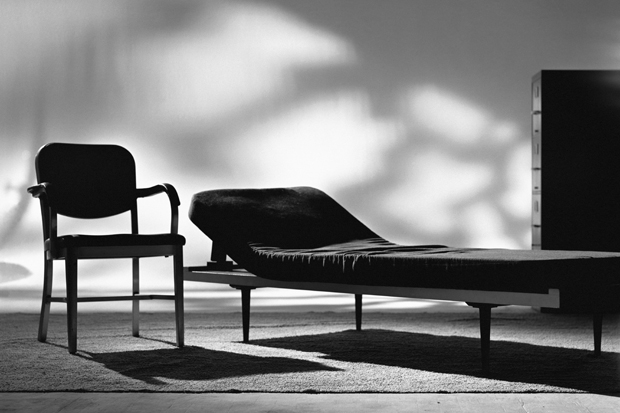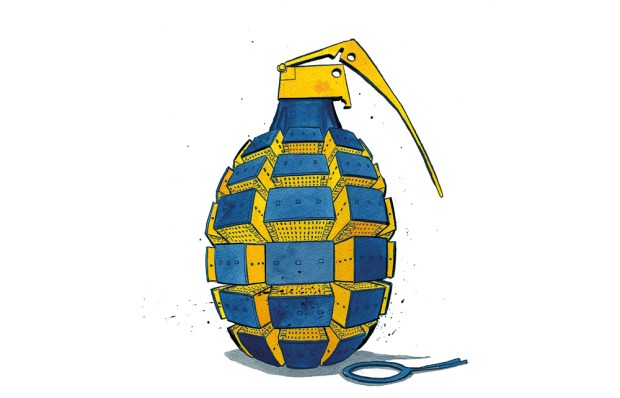New York City
Nothing says New York like a psychoanalyst’s couch. Think Woody Allen or those New Yorker cartoons. It fits our perception of east-coast Americans as all neurotic and self-obsessed. But that mental picture needs updating, because traditional psychoanalysis is in dramatic decline in its traditional heartland.
Across the urban US, in fact, the profession is dying out or having to change drastically. New figures from the American Psychoanalytic Association reveal that the average age of its 3,109 members is 66, up four years in a decade. More seriously, the average numbers of patients each therapist sees has fallen to 2.75. Some shrinks now never meet patients, dealing with them only via the phone, Skype or email. In the 1950s and 1960s, therapists could see between eight or ten patients a day. Now they’re lucky to see one.
So why are Americans shrinking from the shrinks? Packed modern lives must produce more therapist fodder than ever. But that’s part of the reason — a dwindling number of people now have the time or patience for the classic Freudian treatment of three to five weekly sessions — each lasting 45 to 50 minutes and costing up to $500.
The real change, however, seems to be in the American psyche. America — at least elite America — took psychoanalysis to heart in the post-war years. It helped that many Jewish analysts had fled Europe to New York, but it was also a by-product of tremendous affluence. Many Americans had little to worry about except their mental health. There was a name for such patients: the worried well.
Even then there was a sense that psychotherapy was scientifically wishy-washy, but such anxiety if anything helped the industry: if you can’t be cured, you have to keep coming back. Since the 1980s, however, medical insurance companies have been increasingly loath to pay for more than a single visit to the shrink a week, if that. The same decade saw the rise of biological alternatives in the form of psychotropic drugs. Products like Prozac could quickly treat depression, anxiety and panic attacks.
Other forms of treatment have also put the squeeze on psychoanalysis. Chief among these is cognitive behavioural therapy, which teaches people to bypass unhelpful thoughts. ‘It focuses more on the here and now [than psychoanalysis], and the changes in how people think, rather than talking about childhood all the time, about the unconscious or Oedipal complex and so forth,’ says New York psychiatrist Sebastian Zimmermann.
Yoga and meditation are also drawing away people who would once have seen a shrink, say analysts. Purists still insist on the old Freudian ways but many analysts spice up their treatment with breathing exercises and other techniques.
They’re also watering down the rules of engagement set out by the great man. Freud thought that lying down made it easier for a patient to ‘free associate’, to speak about anything coming to mind without censoring it. If he can make eye contact with the analyst, the patient tries to read the reaction he is producing and perhaps tailor what he says to suit. He’s probably going to feel less comfortable ‘regressing’ to early childhood.
But the couches are largely for show now. If a patient only comes in once a week, you have to cut to the chase. He or she can sit on the couch and talk directly to the shrink. ‘I do have patients who want to lie down and then we talk about why they want to lie down,’ a Manhattan analyst told me.
Some say that today’s digital narcissism has replaced the need for a talking cure. Who needs an analyst when every inane tweet or Facebook post will get a response from someone? Yet studies show that the longer we spend on social media, the more isolated and depressed we feel. ‘Nothing can replace human face-to-face contact,’ said an analyst.
Dr Zimmermann, a photographer on the side, has just published Fifty Shrinks, a book of portraits of Manhattan therapists in their offices. He partly did it to preserve what he fears is a vanishing piece of medical history.
But all is not lost. There’s a growing interest in China. ‘It’s a dictatorship, of course, and the Chinese haven’t really looked into their traumatic revolutionary past,’ an Upper West Side analyst told me. ‘Rich Chinese are turning to New York shrinks and getting their sessions on Skype.’ Psychotherapy is moving with the money. Or maybe the citizens of a new superpower just need to talk to someone.
Got something to add? Join the discussion and comment below.
Get 10 issues for just $10
Subscribe to The Spectator Australia today for the next 10 magazine issues, plus full online access, for just $10.
Tom Leonard is a US correspondent for the Daily Mail.
You might disagree with half of it, but you’ll enjoy reading all of it. Try your first month for free, then just $2 a week for the remainder of your first year.














Comments
Don't miss out
Join the conversation with other Spectator Australia readers. Subscribe to leave a comment.
SUBSCRIBEAlready a subscriber? Log in